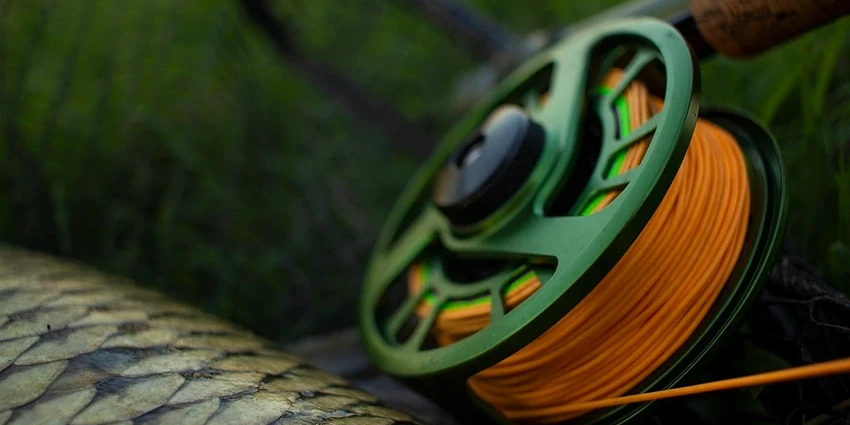All products were chosen independently by our editorial team. This review contains affiliate links and we may receive a commission for purchases made. Please read our affiliates FAQ page to find out more.
Jump to:
Can You Eat Bass?
Certainly! Bass is a delectable choice for both anglers and food enthusiasts. Rich in lean protein and nutrients, bass can be enjoyed through various cooking methods like grilling or baking. However, practicing sustainable fishing and adhering to regulations ensures a responsible and enjoyable dining experience for anglers and foodies alike.
Key Takeaways
- Bass Fishing and Conservation: Understanding the history of bass fishing and its impact on current consumption practices.
- Health and Nutrition: The numerous health benefits of incorporating bass into your diet.
- Choosing the Right Bass: Guidelines for selecting the best bass based on size and habitat.
- Culinary Exploration: Cooking and consuming bass safely and deliciously.
Bass fishing, a revered sport and beloved pastime, extends beyond the thrill of the catch to the culinary delights in the kitchen. Whether you’re an angler or a gourmet enthusiast, the world of bass offers a rich tapestry of flavors, nutritional benefits, and ethical considerations. In this comprehensive guide, we explore the multifaceted aspects of consuming bass fish, shedding light on the history, health benefits, and culinary practices surrounding these versatile species.
The History and Conservation of Bass
The relationship between humans and bass has evolved significantly over the centuries. Historically, overfishing led to a precarious decline in bass populations. However, a remarkable conservation success story emerged from this crisis.
The widespread adoption of catch-and-release practices transformed the culture of bass fishing from a subsistence activity to a sport focused on the thrill of the catch rather than the culinary reward. This cultural shift has profoundly influenced modern attitudes towards eating bass, intertwining ecological awareness with gastronomic exploration.
Conservation Strategies
- Catch-and-Release Campaigns: Pioneered to revive dwindling bass populations.
- Laws and Regulations: Enacted to protect bass species and ensure sustainable fishing practices.
Health Benefits and Nutritional Value of Bass
Bass is not just a delicacy; it’s a powerhouse of nutrition. Packed with essential nutrients like protein, potassium, magnesium, and vitamin B12, bass offers a healthy alternative to red meat. Moreover, its rich content of omega-3 fatty acids plays a vital role in heart health, mood regulation, and stress reduction.
Nutritional Highlights
- Protein: Essential for muscle building and repair.
- Omega-3 Fatty Acids: Crucial for heart health and cognitive function.
- Vitamins and Minerals: A source of essential nutrients like magnesium and vitamin B12.
Choosing the Right Bass: Size and Habitat Considerations
Selecting the right bass is paramount for both taste and health. Bass from clean waters are not only tastier but also safer, with lower levels of toxins. Smaller, younger bass are recommended for consumption due to their milder flavor and lower mercury content.
Habitat Considerations
- Water Quality: Opt for bass from clear, unpolluted waters for better taste and safety.
- Size Matters: Smaller bass often have a more delicate flavor and are safer in terms of mercury content.
Cooking and Consuming Bass
Safe handling and storage are crucial for enjoying bass fish. Fresh bass fillets should be refrigerated and consumed within 48 to 72 hours. Pregnant women can safely include bass in their diet, provided it’s consumed in moderation and sourced from clean waters.
Cooking Tips
- Storage: Refrigerate fresh fillets promptly and consume within 72 hours.
- Pregnancy Considerations: Limit bass consumption during pregnancy, focusing on quality and source.
Bass fishing and consumption offer a unique blend of sport, culinary enjoyment, and ecological responsibility. The journey from hook to plate is enriched by an understanding of the bass’s history, its nutritional value, and the best practices for preparation and cooking. Let’s delve deeper into these aspects.
The History and Conservation of Bass
The story of bass fishing is one of ecological awareness and cultural change. A century ago, bass populations faced severe threats due to overfishing. The response was a combination of stricter fishing regulations and a cultural shift towards catch-and-release practices. This movement was not just about conservation; it redefined bass fishing as a sport rather than a means of sustenance, emphasizing the joy of the catch over the consumption of the fish. This historical perspective is crucial in understanding current attitudes towards eating bass.
Conservation Through the Ages
- Early 20th Century: Marked by overfishing and declining bass populations.
- Conservation Efforts: Implementation of laws and a culture shift towards catch-and-release.
Health Benefits and Nutritional Value of Bass
Rich in nutrients, bass is a healthy addition to any diet. It offers high-quality protein, essential for muscle growth and repair, and is a source of omega-3 fatty acids, beneficial for heart health and cognitive functions. Additionally, bass is a good source of vitamins and minerals like magnesium and vitamin B12, which are key to maintaining overall health.
Nutritional Profile of Bass
- Protein-Rich: Essential for physical health and muscle maintenance.
- Omega-3 Fatty Acids: Beneficial for heart health and mental well-being.
- Vitamins and Minerals: A source of essential nutrients supporting various body functions.
Choosing the Right Bass: Size and Habitat Considerations

The quality of bass meat is significantly influenced by the environment in which the fish live. Bass from clean, unpolluted waters are preferable for their superior taste and lower risk of toxin accumulation. Smaller, younger bass are often recommended for consumption due to their tender meat and lower mercury levels compared to older, larger bass.
Selecting the Best Bass
- Water Quality: Choose bass from clear and clean water bodies.
- Optimal Size for Consumption: Younger bass, typically under 14 inches, are recommended for their delicate flavor.
Cooking and Consuming Bass
Proper handling and storage of bass are essential for a safe and enjoyable eating experience. Fresh bass should be stored in a refrigerator and consumed within a limited timeframe to prevent spoilage. It’s particularly important for pregnant women to consume bass in moderation and ensure that it comes from a safe source.
Safe Cooking Practices
- Storage and Shelf Life: Store bass in a refrigerator and consume within 48 to 72 hours.
- Considerations for Pregnant Women: Limit intake and focus on the quality and source of the bass.
Different Types of Bass and Their Flavors
Bass varieties offer a spectrum of flavors, each influenced by their habitat and diet. Largemouth bass, prevalent in freshwater, have a firmer, slightly fishy taste. Smallmouth bass, on the other hand, are known for their sweeter flavor and less fishy profile. Spotted bass, often found in flowing rivers, provide a finer texture and mild taste. Sea bass, popular in culinary circles, boasts a rich, white fish taste with a tender yet firm texture, often compared to swordfish or grouper for its mild and sweet flavor.
Flavor Profiles of Different Bass Species
| Bass Species | Flavor Profile | Preferred Habitat |
| Largemouth Bass | Firm, slightly fishy | Freshwater, slow-moving |
| Smallmouth Bass | Sweeter, less fishy | Freshwater, rocky streams |
| Spotted Bass | Finer, milder | Flowing rivers |
| Sea Bass | Rich, tender, mildly sweet | Oceanic |
Preparing Bass: Filleting and Cleaning Techniques
The preparation of bass is an art in itself. Proper filleting and cleaning not only ensure safety but also enhance the culinary experience. The process involves removing scales, making precise incisions, and carefully separating the meat from bones. This meticulous preparation paves the way for various cooking methods that can bring out the best in bass flavor.
Best Practices for Cooking Bass
Bass can be cooked in numerous ways, each method bringing out a unique aspect of its flavor. Popular methods include frying, baking, and grilling. Frying, especially when breaded, gives a crispy texture to the delicate meat. Baking is a healthier option, often bringing out the subtler flavors of the fish. Grilling, a favorite among many, imparts a smoky flavor that complements the natural taste of bass.
Cooking Methods and Their Effects on Bass
| Cooking Method | Effect on Bass |
| Frying | Crispy texture, enhances flavor |
| Baking | Subtle, healthy, retains natural taste |
| Grilling | Smoky flavor, adds character to fish |
Can You Eat Raw Bass? Considerations and Safety

While not as common as other fish, bass can be consumed raw in dishes like sushi or sashimi. However, it is crucial to ensure the fish comes from clean, unpolluted waters and is handled correctly to avoid any health risks. Freshwater bass, known for their milder flavor, are more suitable for raw consumption compared to their saltwater counterparts.
Ethical and Environmental Implications of Bass Fishing
Bass fishing is not just about the catch; it’s about respecting and preserving aquatic ecosystems. Ethical considerations include adhering to local fishing regulations, practicing catch-and-release when necessary, and being mindful of the ecological balance. Anglers are encouraged to be stewards of the environment, ensuring the sustainability of bass populations for future generations.
Register for our latest in-depth reviews and product round-ups from the experts
Enter your email address below to receive our twice monthly reviews emails.
By entering your details, you are agreeing to our terms and conditions and privacy policy. You can unsubscribe at any time.
Frequently Asked Questions
It’s safest to consume bass from clear, unpolluted waters to avoid toxins.
Pregnant women can eat bass, but it should be limited and the fish should come from clean water sources to minimize exposure to contaminants.
Yes, smaller and younger bass typically have a more delicate and milder flavor compared to larger, older bass which may have a stronger, more pronounced taste.
Eating bass from polluted waters may pose health risks due to the accumulation of toxins. It’s important to source bass from clean, unpolluted waters and to be aware of any local advisories regarding fish consumption.
Martin Cochran, renowned for his expertise in deep-sea fishing and marine wildlife, plays a pivotal role at Fresh Catch Daily. His adventures across various oceans have equipped him with unique insights and techniques, enriching our platform with diverse and engaging content for fishing enthusiasts.









